In pictures: A week in Tacloban
- Published
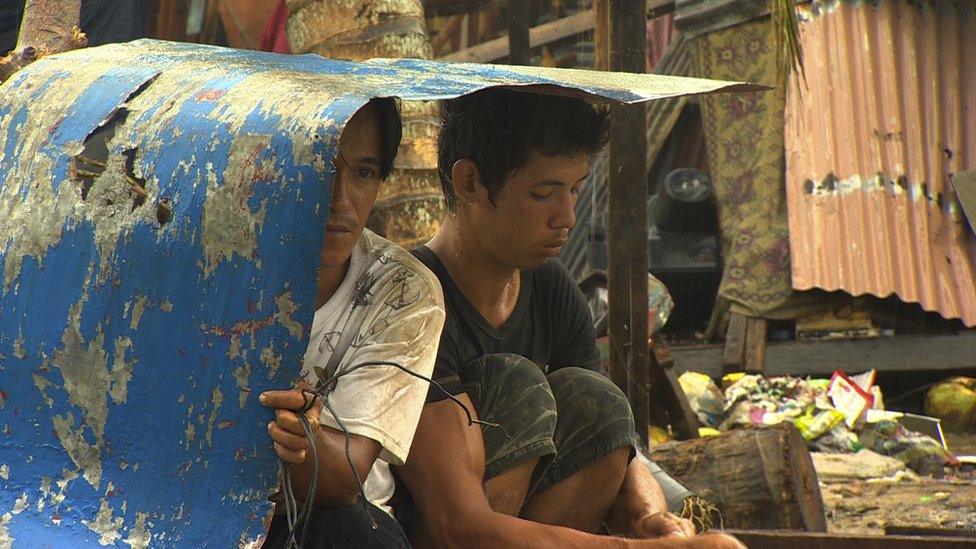
The BBC's Jon Donnison and Joe Phua spent several days in Tacloban in the immediate aftermath of Typhoon Haiyan, which devastated parts of the central Philippines. Text/images: Jon Donnison and Joe Phua.
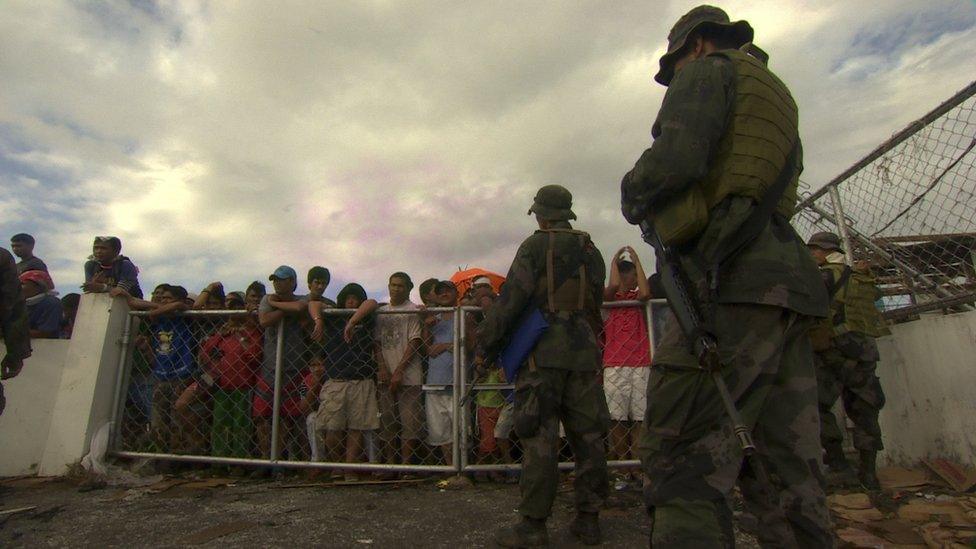
When we arrived at the airport in Tacloban on Monday, we found hundreds of people held back at the gates desperate to get their hands on any aid they could find.

In a room next to the airport’s control tower, a makeshift maternity ward had been set up among the debris. We saw two young women in labour. Babies were born into a world upturned.
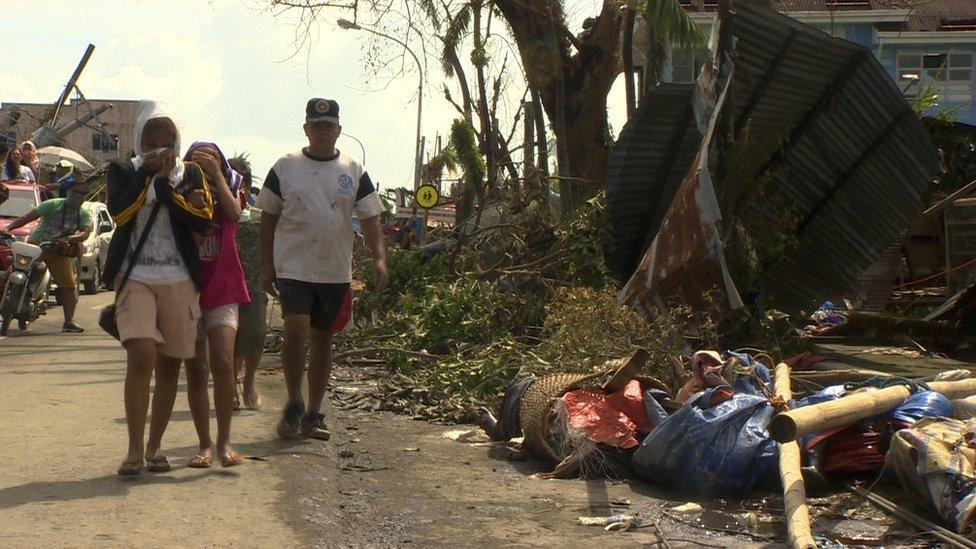
As we drove into the centre of Tacloban, people covered their faces from the stench of rotting corpses lying by the roadside.
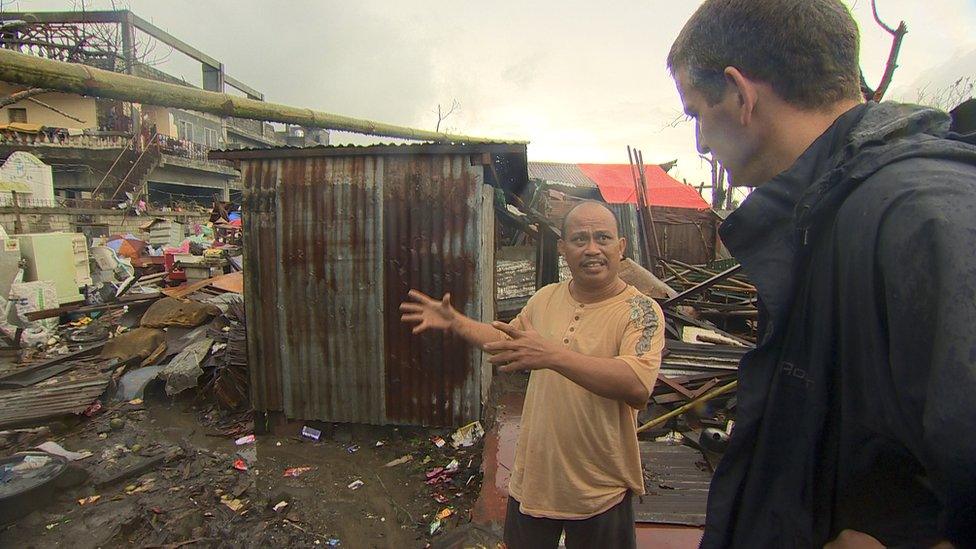
On Tuesday, we met Roberto Amoroto in Pawing, near Tacloban. He told us that when the typhoon struck, he wrapped his arms around his toilet. He said the wind was so strong it swept his legs from underneath him as he clung on for his life.
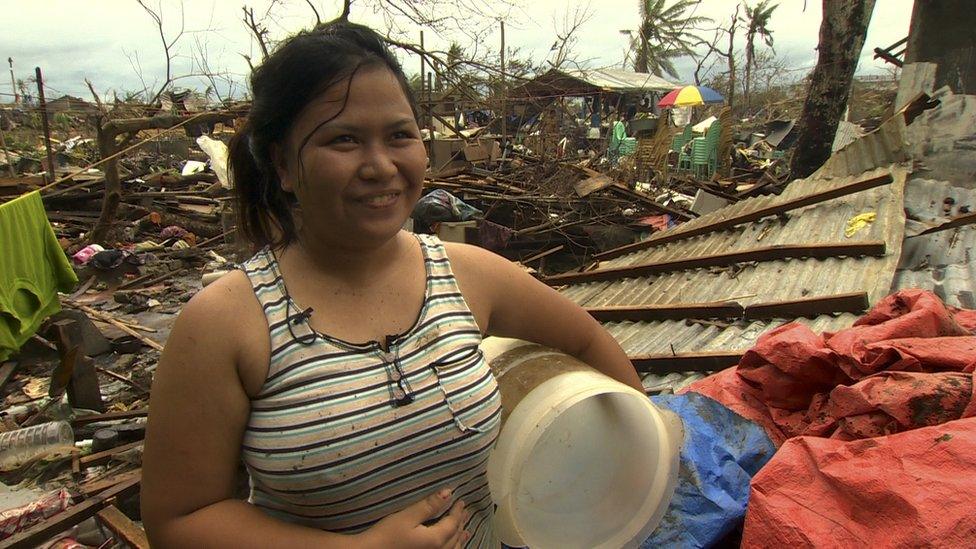
In Pawing, we found Jennica Ekay, who like so many people here greeted us with a smile. “We can survive without houses. We’ll sleep anywhere. No need for money, no television, no cellphones, no technology. We need food, only food.”

In Pawing, we saw a woman doing her washing amid the wreckage.
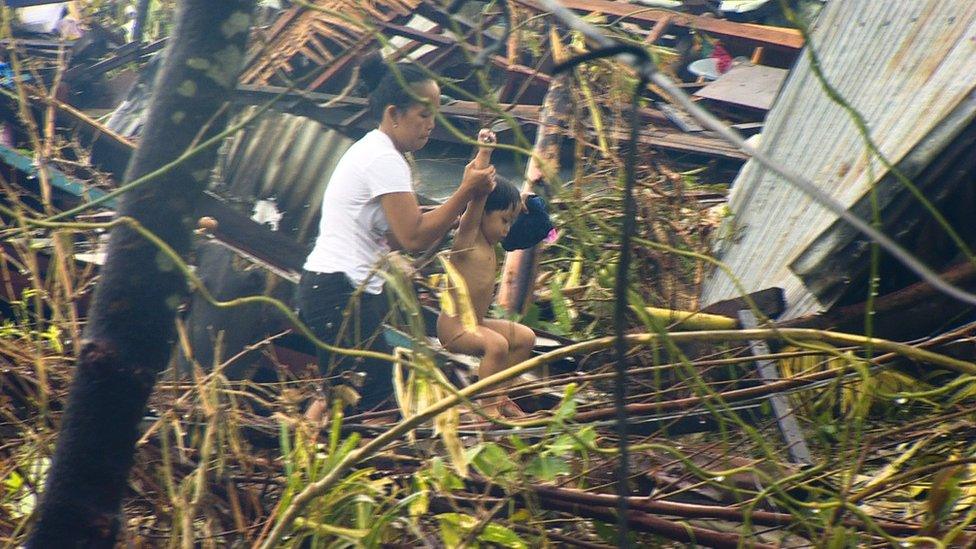
A woman helps a child through the wreckage in Pawing. People here said the neighbourhood was hit with a wall of water when the typhoon struck
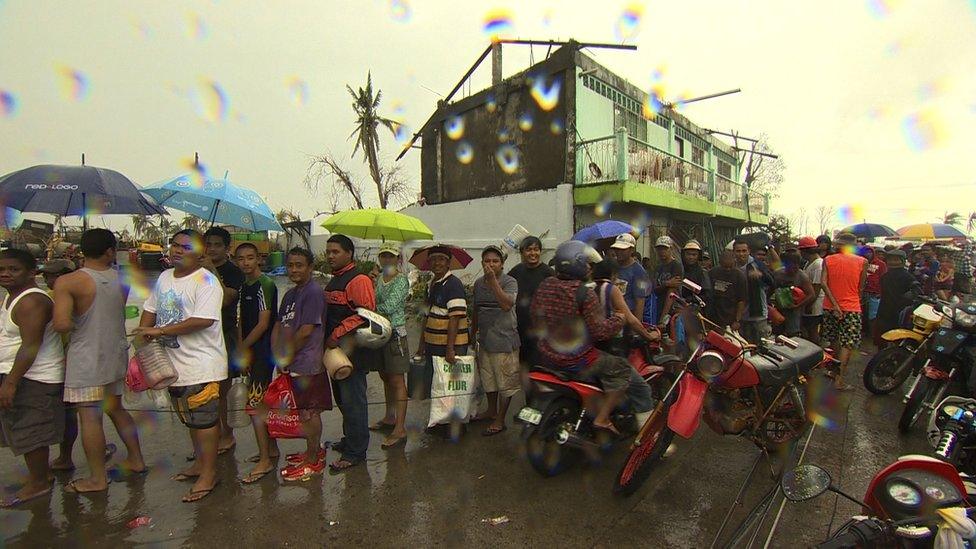
All week, people were waiting patiently in the rain to try and get fuel from petrol stations.
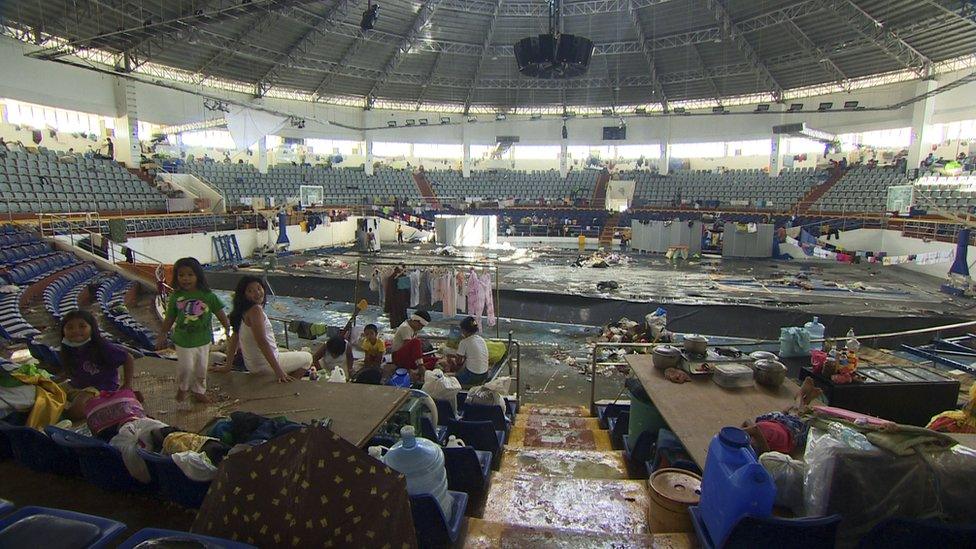
On Wednesday, we visited the Astrodome convention centre, one of the few buildings in Tacloban that still has a roof. Hundreds of families are now seeking shelter here.
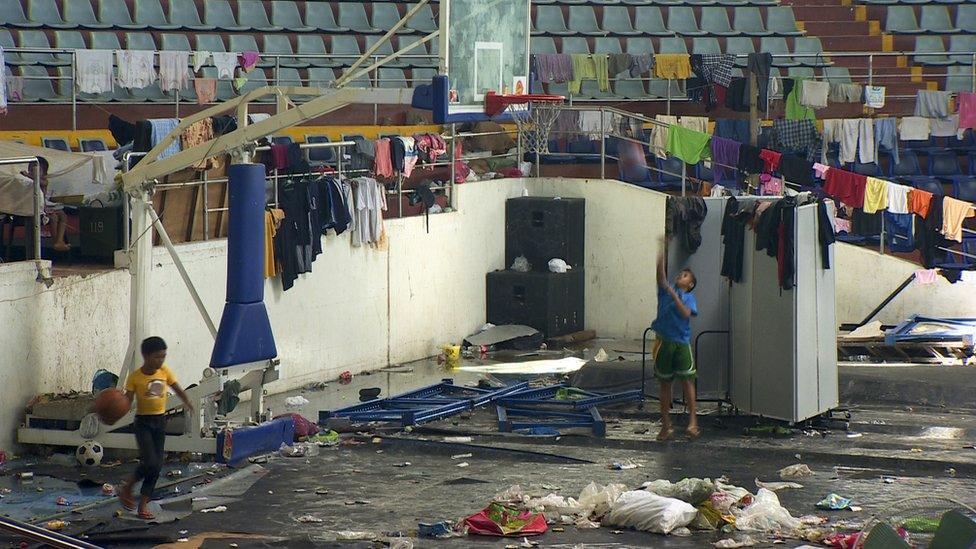
Inside the Astrodome convention centre, two young boys play basketball to pass the time.
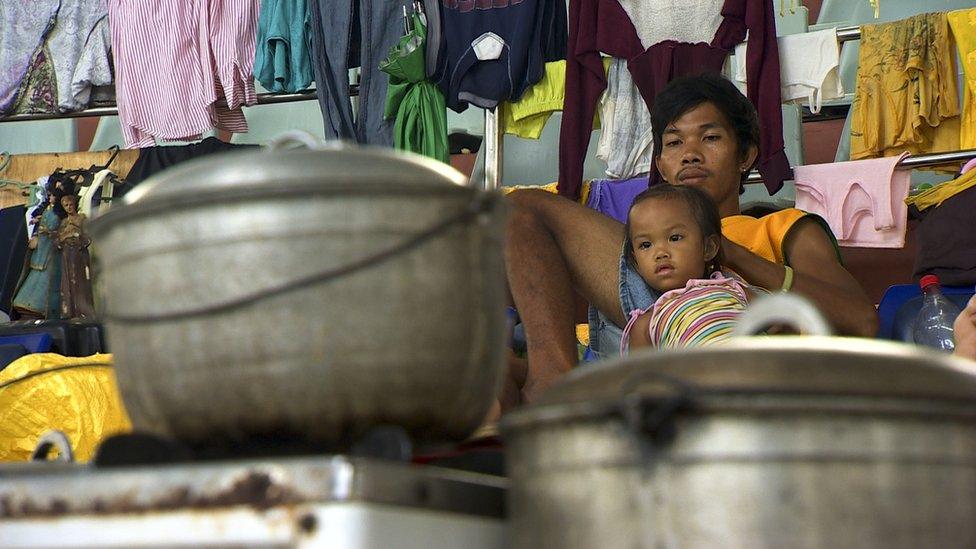
Everyone here told us they were worried about what would happen when what little food they had ran out.